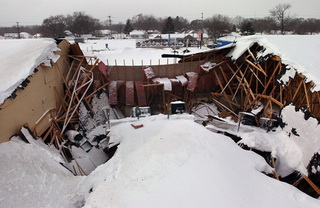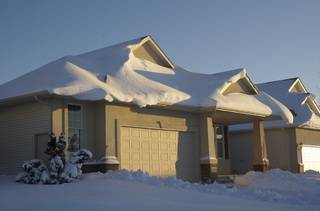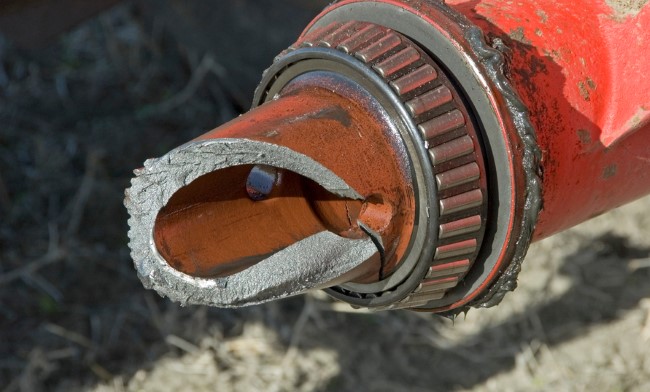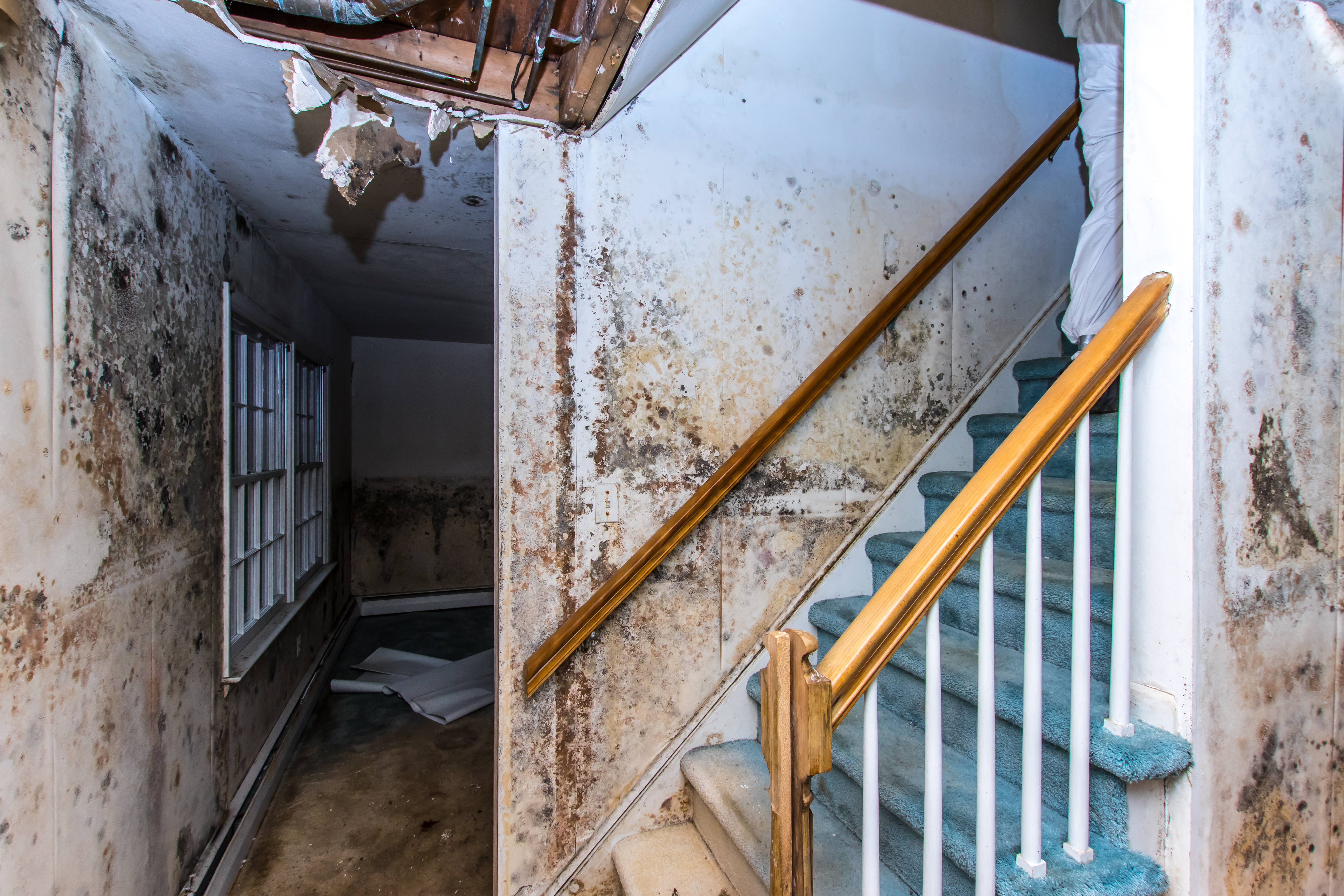
Roof Collapses: Potential Causes and What to Look for
On the Scene E-Newsletter, Edition 132, February 14, 2011
 This winter has been particularly harsh, with accumulating snow in 47 of the 48 continental United States and a higher than average rain in the one snowless state: Florida. These accumulations and rainfalls have created a chaotic situation not only on the roadways and sidewalks but also on structures such as residential homes and commercial buildings. This heavier than normal weight can produce stress on a building’s roof structure to the point that the roof actually collapses, thereby compromising the structure. Utilizing significant education and experience, CED Investigative Technologies Inc. (CED) engineers have been investigating roof collapses for over 24 years.
This winter has been particularly harsh, with accumulating snow in 47 of the 48 continental United States and a higher than average rain in the one snowless state: Florida. These accumulations and rainfalls have created a chaotic situation not only on the roadways and sidewalks but also on structures such as residential homes and commercial buildings. This heavier than normal weight can produce stress on a building’s roof structure to the point that the roof actually collapses, thereby compromising the structure. Utilizing significant education and experience, CED Investigative Technologies Inc. (CED) engineers have been investigating roof collapses for over 24 years.
The Investigation
The first step in a roof collapse investigation is to classify whether the roof was a pitched or flat. For a flat roof which obviously is where most of the collapses occur, the engineer needs to perform a site inspection and review the specifications and design drawings for the structure. The engineer will look at many different aspects of the design, but one that is particularly germane to a collapse is what is called “additional deflection” which causes “Ponding”. Additional deflection means that as weight is added to the roof, the roof would start to bend or “dish”, making the middle of the roof lower than the sides, allowing for the collection of snow melt and any condensation that may be created by the heating of the roof from inside to progressively collect in the middle of the roof, ultimately resulting in the collapse. If the engineer suspects a deflection, they will begin to research further to look for the cause.
Deflection Causation
For example, a flat roofed structure collapsed in Boston, Massachusetts. Snow accumulation was claimed to be the cause. As part of the investigation, the CED investigating engineer reviewed the plans versus the actual “as-built” installation. Questions answered as part of the investigation include:
1. Did the owner self-impose additional weight on the roof structure? Many times, owners or users add equipment on rooftops such as air conditioning system components, which can be extremely heavy. Making matters worse and adding even more stress, these units are sometimes placed in the center of the roof top to make them less noticeable from the ground.
2. Was there a “collateral load” imposed on the roof structure caused by the attachment of equipment to the bottom of roof structural members , thereby creating an additional load on the roof over what was specified in the original design.
3. Was the event a “code event” that surpassed what the acceptable code required for the building and was therefore, unforeseen. In the Boston example, the engineer researched the amount of the accumulation for January 2011 which was 3.64 inches of solid accumulation. The engineer then calculated that the load imposed by the snow accumulation was approximately 18.2 lbs/Sq Ft. Comparing the applied snow load of 18. psf to the code required design load of 50 psf for the Boston area indicated to the engineer that this would not be classified as a code event.
The engineer would also look for clogged gutters and the non removal of accumulated snow and/or water, as this can be a potential cause for a collapse.
Other Factors
Besides the site inspection, the engineer must also investigation other potentially contributing factors. Some of these include:
1. Construction Modifications – did the owner of the building make modifications to the roof such as removing trusses to create a cathedral ceiling, or other modifications without consideration of the initial design and capacity of the roof structure.
2. Built to Code – Was the roof built to the code of the governing body?
3. Built according to plans and specifications – Did the contractor used the materials and equipment specified by the plans and specifications.
4. Plans and Specifications to Code – Was the structure designed per the governing body codes?
5. Reasonable Owner Maintenance – Did the owner of the structure practice reasonable maintenance to make sure that water/snow wasn’t able to accumulate on the structure, and that snow melt and rain were able to efficiently drain, thereby mitigating any load increases.
Although they might seem as straight forward and simple as the accumulation of snow, ice and/or water causing the collapse, those accumulations may only be the “straw that broke the camel’s back”. This is why it is always a good idea to have an engineer experienced in forensics to evaluate the situation to may make sure that causation was the effect caused by mother nature. CED has been providing such a service for over 24 years and is regarded as one of the leaders in the industry. For more information on CED please check out our web site at www.cedtechnologies.com – call us at (800) 780-4221 – or via E-mail at casemanager@cedtechnologies.com.






